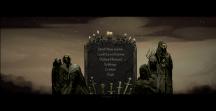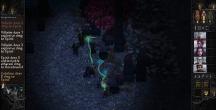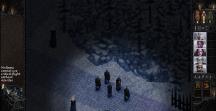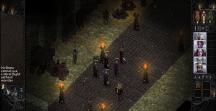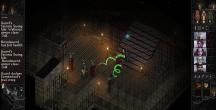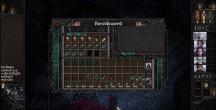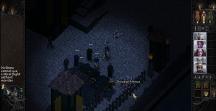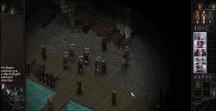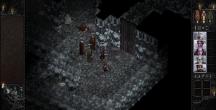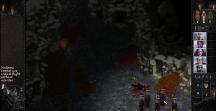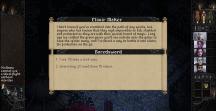Serpent in the Staglands Review
I had an awful lot of fun with Serpent in the Staglands. It really hooked me into its world for about 65 hours all told and, for most of those hours, not a negative thought ran through my mind. In retrospect, of course, sitting back and thinking about the game, there were lots of things I might want to nit-pick about, but while playing, I was more concerned about exploring the intriguing world of the Staglands, my mind filled with stored memory of a dozen quests I wanted to resolve (there's no automatic storing of quests in your journal) and new squares I wanted to investigate (the main map is divided into squares of territory) for no superior aim than sheer curiosity.
Which were the crappy hours? It went something like this:
1----------------------------------------------------------------65
Shitty- not bad-quite fun-awesome-loving this------shitty ending
Which I have to say is quite a common feature of pretty much every RPG I've ever played. There's something about this genre that almost demands the start and end of our adventure is a pile of crap compared to the wholesome nature of being level middle and stuck in the middle of a quest in the middle of nowhere fiddling with your inventory after killing a crazy beast on your way to some lore-important keystone.
Perhaps someone should make an RPG where you start in the middle of nowhere already on your way to a quest goal with a cluttered inventory and a crazy beast in front of you?
The game's primary point of interest is the Open World map with unbarred freedom to explore any nook and cranny you want in any particular order. Your only barrier being your ability to defeat the level of monsters in that area, or rather your desire to keep yourself in safer combat zones. There's a linear plot that unravels as you explore, so it's the usual case of dipping in and out of the main plot mixed with random sidequests and casual wandering for the sake of wandering.
The world is large and full of variety and includes dungeon crawling, town politics, puzzles, small shrine/ruin areas and huge overland monster infested wastelands, varying in landscape with each location, such as snow, marshland, forest, farmland, plains etc etc. Some locations will disappoint you with their seeming lack of relevance and activities while other areas will be knee deep in monsters/puzzles/quests and all sorts of this's and that's.
The combat is intriguing and quite reminiscent of The Dark Eye's rule system of skills and talents while also combining some mechanics of old D&D cPRGs such as Baldur's Gate (being that fighter skills are all automatic passive abilities that don't require button mashing to perform). The difficulty scaling of the combat from hour 1 to hour 65 goes like this:
1------------------------------------------------------------------------65
Really hard-challenging-efficient-kill most things easily-totally steamroll
Which, again, is pretty much an RPG standard, at least in most Open World RPGs anyway. It's certainly no Icewind Dale with regards to quality combat throughout, but it's more involved than Drakensang: The River of Time, with more (and more interesting) fighting skills and spells to choose from. Like Drakensang, however, there are also non-combat skills to select which enable you to have greater interaction with the world around you.
Describing the combat in the specifics of detail is quite tricky, but the main points of fact are:
Isometric Real-time with Pause.
No Zones of Control or Attacks of Opportunity.
Fighter/Archer dominance.
Healing via one spell, possibly two (requires one character to not fight while performing).
Miserly magical items supply.
Spellcasting as and when needed if at all, adds spice but not often crucial or worth it.
Pretty good pathfinding.
Good range of weapon/clothing choices with some items degrading when used.
Different creatures/encounters require different tactics.
Can kill anything in the game without killing the game.
Close to perfect creature variety (some duplication).
AI will target weaker party members but not totally gang-up on them.
Drops are always worth a nosey, but not always worth lugging about.
Some equipment is only available via shops but you won't need to pick up every stick to afford them.
There's a fully unique cursing system available via an inventory item, but I never used it.
Other inventory items can be used in battle in combination with non-combat skill levels.
Both kiting and single enemy agro splitting is sometimes required.
I found the combat less interesting than Icewind Dale but more interesting than Drakensang: The River of Time. Although my time-charts of both general enjoyment and combat difficulty appear to be related by similarity, this is not the case. My low-enjoyment time was related to initial overload of new information and my displeasure at the final plot twists, the fact that this coincided with difficult combat at the start and easy combat at the end was purely coincidental.
The game's Loot is both interesting and rewarding while at the same time being quite limited and sparse. There will always be a reason to have a look at a new Vendor's items and, most often, they will have something you desire at a price that requires further adventuring. What makes the shops unique to most modern games is that the vendor has both limited money and limited space to buy items from you. So if you sell them 20 rubbish items at 1gp, you'll have to buy one back to make room for that good item to sell which then takes all their money. I have to say, I really enjoyed this aspect of gameplay, though it would take many paragraphs to explain why.
There's no need to panic though, as all items left on the ground stay left on the ground. No items will vanish from the game once discovered, just as long as you remember where you left them, which was one of my favourite features of the Divine Divinity game. It's always nice to ‘come home' to your own personal loot-stack.
I do wish there were more magical items in the game though. Not necessarily for the extra power, there's plenty of power available to the player, but just to add a reason to keep changing items in one's inventory every now and then and to have choices between items of the same power level but with different affixes. I also only found one pair of Gloves the whole game, and I didn't even like those.
Quests range from abstract random quests to official bounty hunting and to traditional good deed of the day and a host of other non-quantifiable whatnots. You are rewarded for poking into every possible nook and cranny and can miss out on some really useful quests by not doing so. I really enjoyed the quests structured like this and it's one of the best quest structures I've seen for a very long time. Most quests can also be solved by a variety of means, there's a lot of peaceful/violent outcome variants for having or not having a quest item.
You can play with entirely your own self-made companions or you can switch in-and-out game-world NPCs, of which there are many... many... of them littered around the gameworld, again, some of the most interesting being hidden in the strangest of places! I went with 2 premades and 2 game-worlds and stuck with them the whole game, so I don't know much about any of them and didn't care. They don't really talk much, if at all, beyond intros and goodbyes, so it's no Balder's Gate 2, but it's more interesting than Icewind Dale if you like the concept of companions.
The music is mostly great with some exceptionally atmospheric pieces, but there are a couple of relative stinkers on a short loop. Mostly I loved hearing my favourite pieces come back when I entered certain areas. The gameworld looks fairly ugly with it's constant dark palettes and refusal to use bright colours, which is a pain when playing at midday wearing white as all you can see is your own reflection, particularly during a night-cycle. Weirdly enough, going to the map view also gives a much brighter and clearer perspective on an area, I have no idea why that view can't be the main view colour palette brightness. All-in-all though the game looks appealing and everything fits thematically with everything else, providing a solid and sustainable atmosphere which is not actually that unpleasant to look at.
Load times are too long if you have the game on your hard disk like I did, but I was invested enough to bare it, and there are lots and lots of loading screens, even when going into some buildings. There are plenty of micro-bugs, but nothing that was worth more than an eye-roll as far as I could tell. The only potentially game-breaking one I encountered was:
Some areas are restricted by a door that says "The door is locked by some form of unknown power", which means you need to "do something" to open them, often beyond simple key-finding. If, like me, you made one of your end-of-play save files inside one of these areas then, when you reload the save, the door will have locked itself again - basically trapping you there for eternity, the save not remembering you solved the door opening requirement. Luckily, an autosave a few game-minutes previous to my actual save saved me, but I could have been left with the dilemma of quitting or going back several hours of gameplay.
(Apparently solved in version 0.15).
It might be worth it to remember to always save the game in the out-side areas.
All-in-all this is exactly the kind of game I wish there was more of, the kind of game I wish the AAAs would make every now and then, what I wished Dragon Age: Origins would have been more like, what Neverwinter Nights 2 would have been more like etc. It's by no means a perfect game and I could list umpteen issues I've thought would improve it (since stopping playing), but, as I said, while in the game-world they are just nitpicks... mostly... nitpicks I'd love to chat about, but not things I'd bother with in a general post-play review.
My personal conclusion - not as good as Icewind Dale but better then Drakensang: The River of Time and although I thought the first 3 hours and last hour were forgettable tosh the inbetween 61 hours has left me with some truly wonderful cRPG memories.
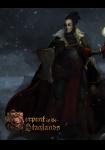
Information about
Serpent in the StaglandsDeveloper: Whalenought Studios
SP/MP: Single-player
Setting: Fantasy
Genre: RPG
Combat: Pausable Real-time
Play-time: 20-40 hours
Voice-acting: None
Regions & platforms
Internet
· Homepage
· Platform: PC
· Released: 2015-05-28
· Publisher: Unknown
More information
Other articles
Summary
Pros
- A complete and original atmospheric world
- A great variety of skills, spells and inventory artifacts
- Freedom to explore the world in any order
- Interesting and original monster variety
- An economy which is tight but rewarding
Cons
- Many minor bugs and idiosyncrasies
- Character creation and build variety is somewhat limited
- Quite long loading times, of which there are many


